Related Research Articles
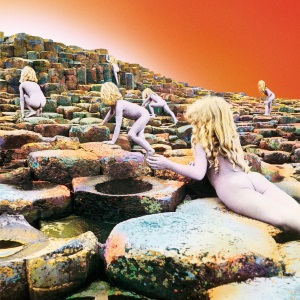
Houses of the Holy is the fifth studio album by the English rock band Led Zeppelin, released on 28 March 1973 in the United States and on 30 March 1973 in the United Kingdom by Atlantic Records. The album benefited from two band members installing studios at home, which allowed them to develop more sophisticated songs and arrangements and expand their musical style. Several songs subsequently became fixtures in the group's live set, including "The Song Remains the Same", "The Rain Song" and "No Quarter". Other material recorded at the sessions, including the title track, was shelved and released on the later albums Physical Graffiti (1975) and Coda (1982). All instruments and vocals were provided by the band members Robert Plant (vocals), Jimmy Page (guitar), John Paul Jones, and John Bonham (drums). The album was produced by Page and mixed by Eddie Kramer. The cover was the first for the band to be designed by Hipgnosis and was based on a photograph taken at Giant's Causeway in Northern Ireland.

Creedence Clearwater Revival, commonly abbreviated as CCR or simply Creedence, was an American rock band formed in El Cerrito, California. The band consisted of lead vocalist, lead guitarist, and primary songwriter John Fogerty, his brother, rhythm guitarist Tom Fogerty, bassist Stu Cook, and drummer Doug Clifford. These members had played together since 1959, first as the Blue Velvets and later as the Golliwogs, before settling on Creedence Clearwater Revival in 1967. The band's most prolific and successful period between 1969 and 1971 produced fourteen consecutive Top 10 singles and five consecutive Top 10 albums in the United States – two of which, Green River (1969) and Cosmo's Factory (1970), reached number one. The band performed at the 1969 Woodstock festival in Upstate New York, and was the first major act signed to appear there.

Björn Nils Olof Skifs is a Swedish singer, songwriter, actor, and screenwriter.
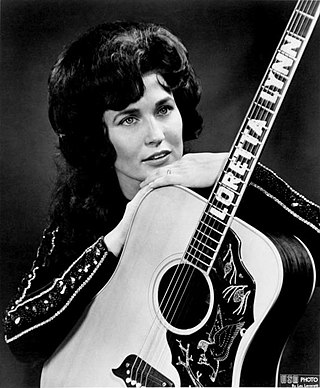
Loretta Lynn was an American country music singer and songwriter. In a career spanning six decades, Lynn released multiple gold albums. She had numerous hits such as "Hey Loretta", "The Pill", "Blue Kentucky Girl", "Love Is the Foundation", "You're Lookin' at Country", "You Ain't Woman Enough", "I'm a Honky Tonk Girl", "Don't Come Home A-Drinkin' ", "One's on the Way", "Fist City", and "Coal Miner's Daughter". The 1980 musical film Coal Miner's Daughter was based on her life.

"Blowin' in the Wind" is a song written by Bob Dylan in 1962. It was released as a single and included on his album The Freewheelin' Bob Dylan in 1963. It has been described as a protest song and poses a series of rhetorical questions about peace, war, and freedom. The refrain "The answer, my friend, is blowin' in the wind" has been described as "impenetrably ambiguous: either the answer is so obvious it is right in your face, or the answer is as intangible as the wind".

Thomas Hall, known professionally as Tom T. Hall and informally nicknamed "the Storyteller", was an American country music singer-songwriter and short-story author. He wrote 12 No. 1 hit songs, with 26 more that reached the Top 10, including the No. 1 international pop crossover hit "Harper Valley PTA" and "I Love", which reached No. 12 on the Billboard Hot 100. He is included in Rolling Stone's list of 100 Greatest Songwriters. He was inducted into the Country Music Hall of Fame in 2008, and the International Bluegrass Music Hall of Fame alongside his wife Dixie in 2018.

Tapestry is the second studio album by American singer-songwriter Carole King, released on February 10, 1971 on Ode Records and produced by Lou Adler. The album's lead singles, "It's Too Late" and "I Feel the Earth Move", spent five weeks at number one on both the Billboard Hot 100 and Easy Listening charts.

Goodbye Yellow Brick Road is the seventh studio album by English singer, pianist, and composer Elton John, first released on 5 October 1973 as a double album by DJM Records. The album has sold more than 20 million copies worldwide and is widely regarded as John's magnum opus. Among the 17 tracks, the album contains the hits "Candle in the Wind," US number-one single "Bennie and the Jets," "Goodbye Yellow Brick Road" and "Saturday Night's Alright for Fighting", along with the live favourite "Funeral for a Friend/Love Lies Bleeding."
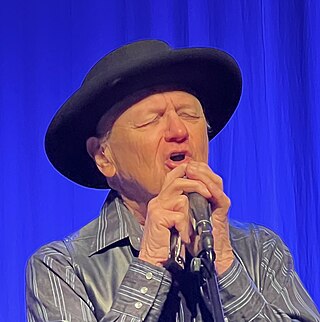
Charlie McCoy, is an American harmonica virtuoso and multi-instrumentalist in country music. He is best known for his harmonica solos on iconic recordings such as Candy Man, He Stopped Loving Her Today, I Was Country When Country Wasn't Cool, and others. He was a member of the progressive country rock bands Area Code 615 and Barefoot Jerry. After recording with Bob Dylan in New York, McCoy is credited for unknowingly influencing Dylan to decide to come to Nashville to record the critically acclaimed 1966 album "Blonde on Blonde".

"Let's Get It On" is a song by soul musician Marvin Gaye, released June 15, 1973, on Motown-subsidiary label Tamla Records. The song was recorded at Hitsville West in Los Angeles, California. The song features romantic and sexual lyricism and funk instrumentation by The Funk Brothers. The title track of Gaye's album of the same name, it was written by Marvin Gaye and producer Ed Townsend. "Let's Get It On" became Gaye's most successful single for Motown and one of his most well-known songs. With the help of the song's sexually explicit content, "Let's Get It On" helped give Gaye a reputation as a sex symbol during its initial popularity. "Let's Get It On" is written and composed in the key of E-flat major and is set in time signature of common time with a tempo of 82 beats per minute.

"Drift Away" is a song by Mentor Williams, written in 1970 and originally recorded by British singer Mike Berry on his 1972 album Drift Away. A version by John Henry Kurtz was released two months later in November 1972. Mentor Williams was a country songwriter, and John Henry Kurtz was an actor and swamp rock singer. It was later given to soul singer Dobie Gray for whom it became a surprise international hit. In 1973, the song became Gray's biggest hit, peaking at number five on the US Billboard Hot 100 and receiving a gold certification from the Recording Industry Association of America (RIAA). The song has been covered by numerous musicians.
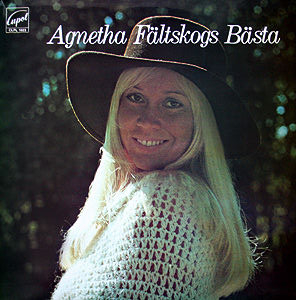
Agnetha Fältskogs Bästa is a compilation album by the Swedish pop singer and ABBA member Agnetha Fältskog. It was released in 1973 through CBS Cupol.
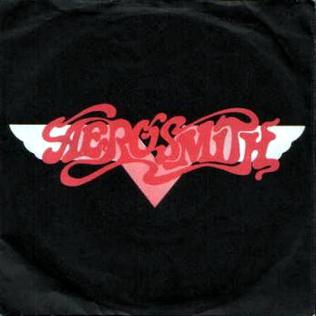
"Dream On" is a power ballad by Aerosmith from their 1973 eponymous debut album. Written by lead singer Steven Tyler, this song was their first major hit and became a classic rock radio staple. Released in June 1973, it peaked at number 59 on the Billboard Hot 100 but hit big in the band's native Boston, where it was the number one single of the year on WBZ-FM, number five for the year on WRKO and number 16 on WMEX (AM). The song also received immediate heavy airplay on the former WVBF (FM), often showing up in the #1 position on "The Top Five at Five" in June 1973.
Anita Hegerland is Norway's biggest selling solo artist. She is a singer, most known for her childhood career in Scandinavia, Germany, Switzerland, Austria, The Netherlands, Belgium, and Luxembourg, and subsequent vocal contributions to Mike Oldfield's work, among others. She is one of Norway's best-selling female artists in history. In 1971, she was, along with Michael Jackson, one of the world's best-selling child singers.
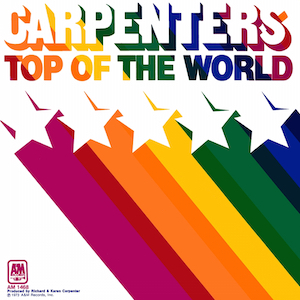
"Top of the World" is a 1972 song written and composed by Richard Carpenter and John Bettis and first recorded by American pop duo Carpenters. It was a Billboard Hot 100 No. 1 hit for the duo for two consecutive weeks in 1973.

"Help Yourself" is a song recorded by Welsh singer Tom Jones in 1968. The song is one of Jones' best known songs and reached number five in the UK Singles Chart in its original run. It topped the charts in both Ireland and Germany, and spent three weeks at the top spot in Australia. The American single reached Billboard peaks of number 35 pop and number three easy listening, and is still widely played on adult-standards radio.

"Everyday" is a song written by Buddy Holly and Norman Petty, recorded by Buddy Holly and the Crickets on May 29, 1957, and released on September 20, 1957, as the B-side of "Peggy Sue". The single went to number three on the Billboard Hot 100 chart in 1957. "Everyday" is ranked number 238 on Rolling Stone magazine's list of the "500 Greatest Songs of All Time".

"Is Anybody Goin' to San Antone" is a song written by Glenn Martin and Dave Kirby, and recorded by American country music artist Charley Pride. It was released in February 1970 as the first single from the album Charley Pride's 10th Album. The song was Pride's third number one in a row on the country charts. The single spent two weeks at number one and a total of 16 weeks on the country chart.

Greatest Hits Vol. 2 is the second compilation album by American country music singer Tom T. Hall released by Mercury in 1975. It reached #12 in the US country charts and was certified Gold by the RIAA.
"Island in the Sun" is a song written by Harry Belafonte and Irving Burgie, and performed by Harry Belafonte for the 1957 film Island in the Sun and on his 1957 album Belafonte Sings of the Caribbean.
References
- ↑ Whitburn, Joel (2004). The Billboard Book Of Top 40 Country Hits: 1944-2006, Second edition. Record Research. p. 149.
- ↑ 93. Tom T. Hall, 'Old Dogs, Children and Watermelon Wine' (1972) Photo - 100 Greatest Country Songs of All Time | Rolling Stone
- ↑ Randall, Alice; Little, Carter; Little, Courtney (2006). My Country Roots: The Ultimate MP3 Guide to America's Original Outsider Music . Thomas Nelson, Inc. pp. 92. ISBN 1-59555-860-8.
- ↑ "Svensk mediedatabas". Archived from the original on 21 October 2014. Retrieved 23 April 2011.
- ↑ "Svensktoppen". 1980. Archived from the original on 3 October 2013. Retrieved 30 April 2011.
- ↑ "Svensktoppen". 1981. Archived from the original on 7 November 2014. Retrieved 26 May 2011.
- ↑ "Tom T. Hall Chart History (Hot Country Songs)". Billboard.
- ↑ "RPM Country Playlist - January 20, 1973" (PDF).
- ↑ "Go-Set Australian charts - Top Records for the Year of 1973". Archived from the original on 2015-03-31. Retrieved 2011-08-08.
- ↑ Flavour of New Zealand, 27 August 1973